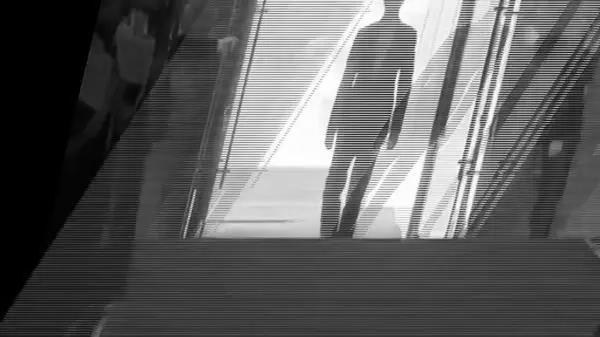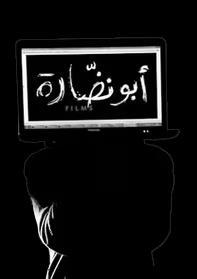

Everything is Under Control
A selection of films by
Abounaddara
January 27, 2025
Mayday Space – Brooklyn, NY
Abounaddara is an anonymous Syrian video collective founded in Damascus in 2010. The name of the collective translates to “the man with glasses,” a nod to the Soviet cinematic giant Dziga Vertov, whose 1929 film Man With a Movie Camera captured the kinetic everyday unfurling of the world’s first successful communist revolution, the Russian Revolution. Abu Naddara was also the name of an Egypt-based satirical political journal that was founded in 1877.
Appearing alongside the Syrian people during the uprising that would eventually become a brutal civil war, costing the lives of hundreds of thousands and turning Syria into a chessboard for global powers, Abounaddara created what they deem as “emergency cinema,” a cinema of immediacy released amidst the dust storm of history. For years, the cinema of Abounaddara, released on a weekly basis, presented the perspectives of Syrians from all sides of the civil war. In the hundreds of films produced by the collective, we meet soldiers, mothers, militants, breadsellers, textile workers, and countless others. These immediate images, this “emergency cinema,” counteracted the more spectacular images broadcast by Western newsrooms and shared on various social media websites. Though the films are quite short, with most of them no longer than two minutes, the images are able to breathe in a way they don’t in mainstream film or the nightly news.
Abounaddara took back the image of a people who had lost it, alongside their homes, their livelihoods, and their families. This process of organic image-making challenges the hegemonic structure of the world of mass audiovisual media—a world in which, in most cases, a small number of entities (think Meta, CNN, MSNBC, Fox News, etc.) present us images and narratives embedded with our predisposition. With Abounaddara, we have an anonymous group of filmmakers actively re-defining terms such as “documentary” and “news,” while simultaneously challenging the possibility of singular narratives.
In a letter to the influential American journal The Nation in late-2016, the collective wrote, “But what can be done faced with the spectacle of indignity streamed almost live from Syria since 2011? This spectacle is unprecedented. Never before in history has a crime against humanity been filmed day by day, turned into a spectacle with the cooperation of both victims and executioners, broadcast by the big television networks and streamed on social media, intercut with ad breaks, consumed by the general public, and commodified by the art market.”
Perhaps this sounds familiar.
We in the West continue to consume the spectacle, the mediated image, in the form of Palestine, Lebanon, Yemen, or Syria once more, as so many on social media were tracking the swift advances of Hay’at Tahrir al-Sham,
or HTS, the new rulers of Syria, as if they were a basketball team making a miraculous postseason run.
14 years after the beginning of the Syrian Revolution and nearly a year-and-a-half after October 7th, it seems as though our thirst for blood, death, and mutilation knows no bounds. What is the long-term psychological impact on a society that is addicted to misery porn? While I can’t answer that question with certainty, I fear that any potential answer is underlined by numbness. People try to combat this numbness by continuously reposting the latest Israeli atrocity, yet the irony there is that the reposting, or reproduction, of the spectacle only further calcifies our collective numbness. In collectively watching the less sensational images of Abounaddara, I hope the films can spur a conversation about the dissemination of images, what responsibility we have in the face of atrocities, Syria’s past, present, and future, and how radically the world has changed in the few months since we last saw a film together.
– Rosa Martinez
Selected films
Breaking News (2016) After the Image (2013)
The Sniper (2014) Field of Battle (2017)
Believers Without Borders (2013)
The Witness—The Jihad (2017) In Search of the Syrian Fanatic (2023)
All the Syria’s Futures (2016) Here and Elsewhere (2016)
The Kid (2015) In the Name of the Father (2013) What Justice? (2014) Then What? (2012)
Woman With Flag (2021)
Everything is Under Control, Mr. President (2011) The End (2011)
Watch online: https://vimeo.com/showcase/11527100

RIGHT TO THE IMAGE
In situations of war and mass violations of human rights, our hyper-mediatized world creates the typical images of victims. We live in a world filled with images that are captured, edited, and published at hyper speeds. The images of the human debris of human madness are too frequently about mutilated and starved bodies, not about persons; they are too frequently images of the dystopian landscapes of wretched camps and the ruins of devastated neighborhoods and not images of the network of social relations and forms of collective cultural and political life that sustains individuals in their struggle for life in dignity and peace. Representations of human suffering and injustice are not only the effects of aesthetic choices; these are also political and ethical choices. The right to the image finds its legal/ethical foundation in the central principle that ‘every person is entitled to equal concern and respect in the design of the structure of society.’Abroad and inclusive process for the progressive development of a right to the image is possible under existing rules of international human rights law, by deepening a holistic reading of binding international treaties. For example, in the International Covenant on Civil and Political Rights it is as much implicit in the right to selfdetermination (Article 1) as it is in the right to privacy (Article 17), or the right to the freedom of opinion and expression (Article 19).It is as much about individual choice and the dignity of the human person, as it is about the right of a people to freely determine the terms of their political association including issues related to the expression of cultural identity.
Read their full statement here (in Arabic): http://www.abounaddara.com/THE_RIGHT_TO_THE_IMA GE.pdf
Visit their Vimeo page: https://vimeo.com/user6924378

